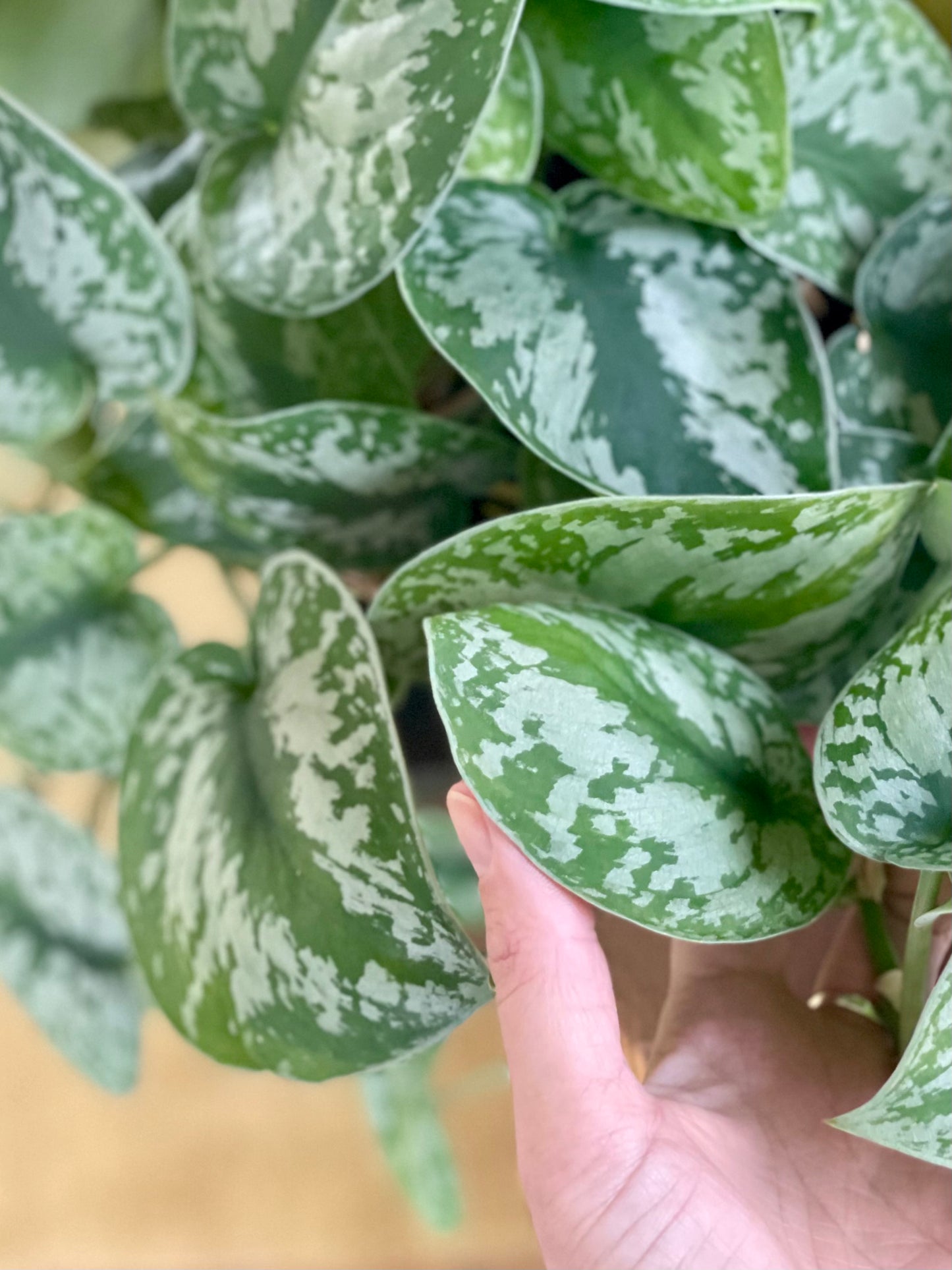
Growing your plant collection by propagating in soil is, without a doubt, the optimal way to grow your houseplant for the sake of the plant. However, unless you are more of a helicopter plant parent, it may not be the best fit for you. That's why we decided to begin our propagation series with our previous blog post 5 Tips for Plant Propagation: Water. Water propagation is a more visual friendly way to kick off the process of rooting your plant cuttings and we suggest it for newer plant parents just to familiarize yourself with the growing process.
That said, when propagating plant cuttings in soil there are ways of making the experience rewarding and relatively easy. The key for successful growing starts in the soil. With a healthy foundation rich in humus and minerals, life can truly thrive.
*One tip we've recently learned and wanted to share: if you propagate a cutting in soil, it's very difficult (or nearly impossible in our experience) to propagate a future cutting from that same plant in water. Interesting, right?
We've gathered methods that work well when propagating cuttings in soil for you, beginning with the most important part—the soil! Let's dig in.
Tip 1: Soil Composition
Earthworm castings, volcanic rock dust, alfalfa meal, kelp flakes, pearlite, coconut coir, sphagnum moss, and biochar. These are the main ingredients we recommend mixing to create a beautiful potting soil for your new green baby.
Why don't we include Peat Moss in our mix? A few years ago while researching mosses for our shop and previous moss blog post, we learned something very interesting! The difference between Sphagnum Peat Moss and Peat Moss. Often referred to as ‘peat moss’ or ‘sphagnum peat moss’ these are actually two parts of the same plant. One is a sustainably harvested renewable resource often used with our houseplants (moss poles, orchids, leaf propagation, kokedama) and regenerates every 5-7 years (Sphagnum), while the other takes thousand of years to reproduce (Peat) and is a common ingredient in garden and potting soil mixes, (unfortunately) as it should be left undisturbed.
Sphagnum Moss grows along the surface of bogs, swamps or soil wetlands. When harvested sustainably it can regrow quickly (about 5-7 years) without negatively impacting the environment. Peat Moss on the other hand, is sunken Sphagnum Moss growing over several millennia forming the foundational layer of a swamp or peatland, and is responsible for sequestering (soaking up and storing) more carbon than all other types of plant life combined! When drained and harvested, this precious resource then releases stored carbon into our atmosphere. Not good. Peatlands need our protection for a variety of reasons, so let’s be sure to only buy or source sustainably sourced Sphagnum moss.
What is biochar and what does it do in our soil? Great question and one we will do a deeper dive on in a future post! Biochar is a charcoal like material that, when added as a soil amendment, attracts and retains nutrients and moisture while providing a home for fungi and micro-organisms. Not only is this a healthy addition to your soil, but biochar also has the unique ability to sequester carbon, a huge component in helping to reduce greenhouse gases. Win, win!
Speaking of soil health, we offer a wealth of information exploring how playing in the soil effects your health too! It’s fascinating stuff friends and we are so here for it! Check out our previous blog posts to learn more. 
Tip 2: Hydration (and a little moss go a long way)
This is perhaps the trickiest part of soil propagation. Staying moist while not rotting your new cuttings. We've had success adding a bit of dried tree moss soaked in water with a few drops of our Sacred Soil Tonic, gently squeezed out and placed on top of the cutting as a top dressing. This gives them a little blanket to help keep moist and cozy and, bonus, added nutrients from the tonic gives them a boost of nutrition!

You can also opt to invest in a soil moisture meter if that feels right for you, but we've always utilized the old fashion method, the fingertip test! Place the tip of your finger into the first 2 inches (4-5 cm) of soil, if it's dry, time to water, if it's wet, hold off another day or two. However, this is just a general rule. It depends on the type of plant you are propagating. For instance, if you growing a pothos or philodendron types, or something like this vibrant scindapus pictus which we grew in soil from just three small cuttings a few years ago and now look at it! (bi-weekly Sacred Soil Tonic feedings and bright, warm, indirect light resulted in this epic beauty that graces our living room window...ok we digress, we are just so proud of plant parent moments like this!) In cuttings like this, the root system emerges from the nodes on the stem and will need to stay damp near the surface of the soil to encourage that initial growth.
Tip 3: Adequate LightIt's important to give your plants enough light to aid in photosynthesis and growth while finding a place in its new soil home. Too much direct or hot sun however is not recommended, as it will stress out the cutting and quickly dry out the soil. Next to a grow light or in a bright window is a good home for your new cutting to take root.
Tip 4: Temperature
Keep your babies cozy! The ideal soil temp for most houseplants ranges between 65-80 degrees fahrenheit (18-28 celsius). But that's the soil temp, not your ambient temperature. Inside your home, your green friends will thrive when temps range between 60-85 degrees fahrenheit (15-29 degrees celsius).
Tip 5: Consistency
It's important to keep the soil moist to encourage initial healthy root growth. This is a fun time to try out our Sacred Soil Bath ritual. Once the roots are an inch or two long, we recommend deeper, less frequent hydration with the addition of our Sacred Soil Tonic which establishes long lasting resistance to pathogens and pests while aiding in your green baby's inner strength and immunity!

When we create a ritual around caring for our plants, it can become a lovely form of therapy for us too! We call it Sacred Plant Rituals and this type of propagation is a perfect example of how to connect with the natural world inside the home through time spent with your plants.
Happy growing friends and sending much love to you,
Karina and Team SE
